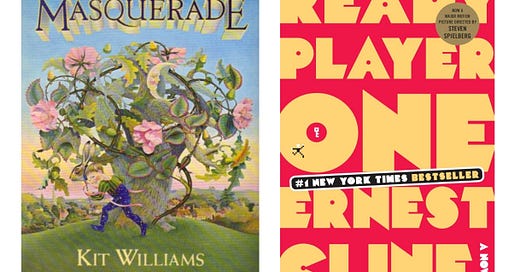I’m sure I’m not the only one who read the Observer’s story about The Salt Path yesterday and whose jaw dropped to the floor.
One of the biggest non-fiction hits of the past decade, it’s currently riding high at Number 1 in the Sunday Times thanks to the film adaptation starring Gillian Anderson and Jason Isaacs and the ongoing love for a story about a homeless couple who go on a spiritual journey along Cornwall’s coastal path.
Except the Observer now disputes the veracity of the book and points out glaring omissions in their story that paint author Raynor Winn and her husband in a far from flattering light; how Winn embezzled money from her employer, and how she vanished after being arrested by the police. Even Moth’s neurological diagnosis and dramatic recovery have been questioned by medical experts.
I’ve just been in a book shop and they were questioning what to do with the book and whether to now file it in ‘fiction.’
One of the most gob-smacking details about the exposé, was how the Winn’s (real name Walker), set up a publishing company and released the novel, How Not to Dal dy Dir (Stand Firm), written by ‘Izzy Wyn-Thomas.’
Readers were encouraged to purchase the novel directly from the publishing company’s website with the incentive that if you bought a copy, you would be entered into a free prize draw to win the Winn/Walker’s house in Wales. In the terms and conditions it said that the house was being ‘offered free of mortgage or any other legal or registered charge.’ Yet it failed to mention that at this point, the couple had a mortgage of £230,000 on the property and that a judge had ordered the house to be repossessed if they didn’t sell it.
Look, perhaps the Winns were trying to show initiative with this prize draw.
Perhaps they were hoping that they would sell so many books that they could raise enough to discharge their debts.
Perhaps some people won’t care that Winn was being selective with her retelling of their Salt Path story, (her statement last night said that ‘this is the true story of our journey,’ ) although I for one, now feel a bit duped.
And I would be very cross if I’d entered that draw for the house.
It’s not clear if the Winn’s have paid all their debts, what happened with the prize draw and I really hope they have not purposefully mislead their readers.
But at least the Observer story got me thinking about innovative - and more ethical - ways to sell books. (*Not fraud/misrepresentation!)
The Masquerade craze passed me by but my husband was a big fan as a child, so much so that I bought him a copy for an anniversary present a few years ago.
Published in 1979, Masquerade changed the way books could engage readers. Not just a children’s picture book, Masquerade contained an elaborate treasure hunt hidden within its intricate illustrations.
Williams buried a real, handcrafted golden hare somewhere in Britain and challenged readers to solve the puzzle within the pages to find it. It sparked a nationwide hunt which boosted book sales dramatically and paved the way for immersive storytelling and participatory marketing campaigns.
An even bigger treasure hunt prize was Ernest Cline’s Ready Player One, where a vintage DeLorean (the Back to the Future/gull-wing door car,) was up for grabs. Once again the author buried clues throughout the novel - in this case URL links - which took you to various video game challenges, one of which was that you had to set a new world record for Pac-Man/Joust Arcade/ Joust Atari 2600/ Black Tiger, or Robotron 2084.
Did the competition work? Well, the book did go onto the New York Times bestsellers list and reader Craig Queen won the car.
Innovative sales initiatives are everywhere if you look.
Welcome to Night Vale co-creators did secret episodes that expanded their book world where fans needed to buy the book to decode the audio clues.
Amanda Gorman auctioned an NFT poem that included her handwritten notes.
Andy Weir (The Martian) and Hugh Howey (Wool) posted drafts of their novels online to build anticipation.
Nick Cave released The Sick Bag Song as a luxury limited edition in a custom box where buyers also got music, hand-annotated notes, and access to a private reading event.
And Tom Phillips turned a single copy of his book into a cult item.
In 1966 Phillips bought a Victorian novel called A Human Document by W.H. Mallock for threepence. He painted, collaged, and drew over each page, leaving only selected words visible creating a new work A Humument.
That book started getting shown in galleries then he went on to sell original pages and prints as they became collectible artworks in their own right. He licensed the work too, so now you can buy all sorts of prints and postcards of the various pages.
In a world where kids are reading less and less, where attention spans are dwindling, and books are competing with lots of different entertainment forms, innovative marketing strategies aren’t just about hype, they can make books more exciting and expand the world of storytelling. They can pull in new audiences - puzzle fans or art collectors, make reading a community event, they can make books fun.
It’s time we all got creative. Just don’t do any dodgy prize draws.
Tasmina x









